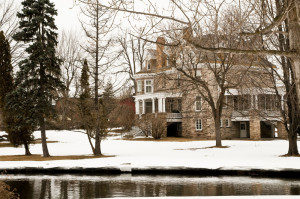 As the days grow shorter and the air grows colder, people around the country experience the telltale signs of the fall season. Along with the approach of the holidays and the changing color of the leaves, however, you can also expect unpredictable weather patterns; from sudden storms to early snowfall. Especially in New England, there is no telling when temperatures may drastically drop – an event that can have significant impacts on your home.
As the days grow shorter and the air grows colder, people around the country experience the telltale signs of the fall season. Along with the approach of the holidays and the changing color of the leaves, however, you can also expect unpredictable weather patterns; from sudden storms to early snowfall. Especially in New England, there is no telling when temperatures may drastically drop – an event that can have significant impacts on your home.
There are numerous ways in which falling temperatures can create problems for your home:
– Frozen pipes: What may potentially be the biggest problem caused by cold weather is the freezing of your water and gas pipes, which occurs when the temperature is so cold that the pipes crack or burst from expanding ice. This leads to problems accessing these utilities in your home.
– Weathering: Strong storms can damage the paint on your house and lead to a weathered look.
– Roof damage: Falling trees or piled-on snow can cause damage to roof tiles or the foundation of the roof itself; which can in turn lead to leaks or even collapses.
– Landscape damage: Certain plants cannot survive the freezing temperatures of winter, or may be damaged or knocked over by strong storms.
– Cold temperatures: The need to keep your home warm can skyrocket your energy costs and end up being ineffective despite your furnace’s best efforts.
Thankfully, you can take preventative measures to guard your home against the harmful effects described above. Take stock of your situation, analyze the greatest threats to your home, and take the following steps to safeguard your home against cold weather:
– Frozen pipes: Insulate your exposed pipes with foam insulation, and make sure to inspect those that are not insulated regularly.
– Weathering: Invest in weather-resistant paint that will withstand chipping once cold weather approaches.
– Roof damage: Make sure that your trees are not so close to the home that they may cause damage if they fall over onto your roof. Also, clear your roof of snow and inspect it for damage after the weather warms.
– Landscape damage: Bring potted plants indoors if possible, and if not, add mulch around plants and cover plants that are prone to frost damage.
– Cold temperatures: Use weather stripping to minimize the heat that escapes your home and insulate the house from drafts.
We want you, your family, and your home to be completely safe and sound during the transition into fall and eventually winter. However, in the event that inclement weather conditions have damaged your home or automobile, contact Waitte’s Insurance Agency, Inc. so that we can help you review your current homeowners’ insurance policy and provide you with peace of mind!
